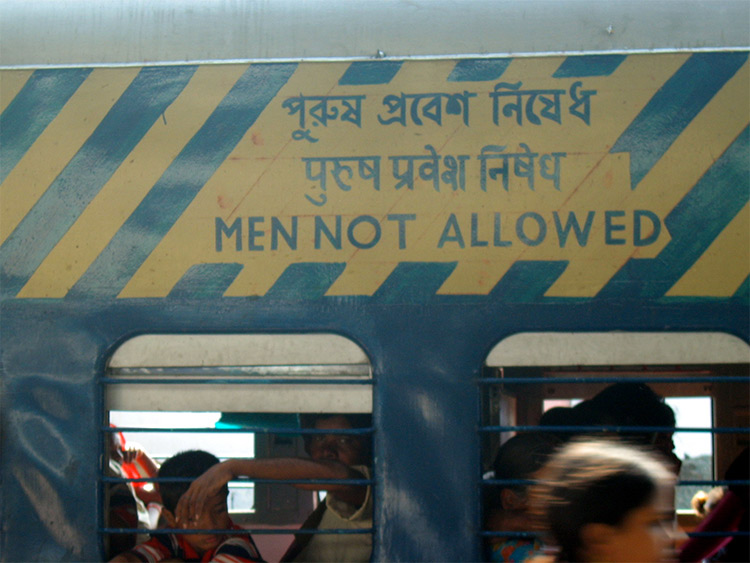
Public transport is widely acknowledged as an essential component in creating sustainable and liveable cities. As the threat of overpopulation and pollution has increasingly become a key concern of voters, state and local governments across the world are attempting to increase dependency on clean and efficient public transport. However, such efforts are being undermined by the threat of sexual harassment that many female commuters are facing daily.
One of the main reasons women opt not to use public transportation is reportedly due to their fear of sexual crime (Christiane Rossbach from European Institute for Gender Equality). According to a 2021 Ipsos study, 45 percent of French female respondents avoid using specific types of public transportation to avoid sexual harassment. Similar results from studies carried out in numerous nations throughout the world have been recorded, demonstrating the issue's universality.
Carriages reserved solely for women have been implemented as a solution in several countries already.

The introduction of "women-only carriages" has proved controversial in a number of countries. In several nations around the world, including Iran, Japan, India, the United Arab Emirates, Egypt, Indonesia, Brazil, Mexico, Malaysia, and Taiwan, segregated areas on public transportation are already in use. However, in Europe, governments and transport operators are hesitant to implement the same
"We have no intentions for women-only carriages," stated Mika Murray of TFL (Transport for London). Instead, we strive to make sure everyone on our network feels secure at all times.
British Transport Police spokesperson Claire Harper states that "tackling sexual offences is our top responsibility."
Despite these assurances that stopping inappropriate sexual behavour is a top priority, a 2020 YouGov poll indicated that 55% of London's female residents have experienced sexual harassment on public transportation.
The largest transportation provider in Berlin, BVG, repeated TFL's position and stated that: "So far, the BVG has not had any specific carriages, compartments, or spaces for women, and they are not planned." He argues that passenger safety is of utmost importance and cites BVG's adoption of several safety measures across all of its public transportation services as evidence. CCTV is one such safety measure that has become a standard feature of public space in the post-9/11 world of enhanced security. Contrary to what the transportation authorities believe, female commuters routinely discount CCTV as being ineffectual at deterring crime, largely because they have doubts about the extent of monitoring (Yavuz, Nilay, and Eric Welch. 2010).
"Given the enormous number of everyday passengers, public transportation is a statistically safe location," the BVG spokeswoman stated. The majority of female commuters, who routinely rank it among the public locations they fear most, do not agree with this sentiment.
But are carriages for women the only really answer to the issue?
While it has been demonstrated that gender-segregated carriages do reduce sexually based violence to some extent, a common complaint is that they do not offer any real long-term solutions, which would necessitate addressing underlying gender imbalances in society.
According to Valerie Wise at Victim Support, "Women's only carriages might make women feel safer in the short term, but to get to the root of the problem the government must do more to address the behaviour of men."
Same-sex carriages, which are frequently referred to as "victim shaming" strategies, can be seen as putting the burden of sexual harassment prevention on the shoulders of the victim rather than the perpetrator.
The LGBTQ+ community has also criticised the initiative, saying it is not inclusive and might even do more harm than good. Whether trans women should have the right to use the same public toilets as cis-gender women is already a contentious issue used to oppress and discriminate against the trans community. Adding fuel to the flames by designating yet another public area as being only for women is not the answer.
There are alternative methods to make mass transit safer for women, according to Britt Robinson of the International Centre for Research on Women, despite the fact that women-only transit is frequently considered as a tool rather than a solution. She suggests using a gender lens when designing mass transit, focusing on four key areas: Transit Institutions (hiring practises, gender equality training, standard reporting procedures); Laws & Policies (gender-disaggregated data collection, revision of sex crime laws and definitions); Transit Services (night stops, uniformed staff, consistent off-peak hours, electronic pay stations, free and reliable WIFI); Transit Infrastructure (transparent station walls, panic buttons); and Transit Infrastructure (panic buttons, transparent station walls).
Despite these potential solutions, there is little hope that the transportation industry will actually improve anything, as there seems to be a mismatch between how women and transportation corporations view the incidence of sexual harassment.
The mayor of London, Sadiq Khan, responded to a 2016 Change.org petition calling for single-sex train carriages in the UK, which may provide an explanation for this disconnect. According to Khan, "90 percent of unwanted sexual behavior [is] not reported to the police," therefore any strategy should put the greatest emphasis on encouraging victims to do so.
Transport for London launched the Report It To Stop It initiative, which gives sexual assault victims the assurance that their crime will be thoroughly investigated by police, in response to the low reporting rates. According to Sadiq Khan, since the start of the campaign, there has been an increase in reporting.
Nevertheless, despite these claims, YouGov released a 2020 poll four years after the Report It To Stop Campaign started showing only 2% of victims of sexual harassment on London's public transportation had reported the incident to police.
Transport providers may not be aware of the real scope of the problem given the under-reporting of inappropriate sexual behaviour. Those who have the authority to implement measures to stop such incidents are unable to do so without a comprehensive grasp of the threat sexual harassment poses to women using public transportation.
However, if this problem is a symptom of a larger collective issue, can any meaningful change occur without first addressing the underlying-gender inequalities within our societies?
Share This Post On
0 comments
Leave a comment
You need to login to leave a comment. Log-in


